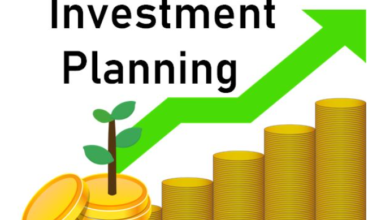
How Bankruptcy Affects Your Financial Decisions
Bankruptcy is a powerful financial tool that allows individuals and businesses overwhelmed by debt to reset their financial lives. However, the decision to file for bankruptcy is complex and carries lasting impacts on financial choices, particularly for those going through Bankruptcy Chapter 13 or Chapter 7. This article explores how bankruptcy affects various aspects of personal finance, from borrowing to budgeting, and provides strategies for moving forward with sound financial decision-making.
Understanding Bankruptcy and Its Types
Bankruptcy provides different options depending on individual circumstances. Two primary types of personal bankruptcy are Chapter 7 and Chapter 13. Each type has unique implications for financial management.
Chapter 7 Bankruptcy: Liquidation
Chapter 7 bankruptcy is often called “liquidation bankruptcy” because it involves selling certain non-exempt assets to pay creditors. This type of bankruptcy generally clears unsecured debts, such as credit card balances and medical bills, and can give individuals a fresh start. However, Chapter 7 can remain on a credit report for up to 10 years, affecting financial decisions for a significant period.
Chapter 13 Bankruptcy: Repayment Plan
Bankruptcy Chapter 13 is a reorganization process, also known as a “wage earner’s plan.” It allows individuals to set up a 3- to 5-year repayment plan to repay part or all of their debts. One key feature of Chapter 13 is that it enables individuals to retain certain assets, such as a home or car, as long as they comply with the court-approved payment plan. Chapter 13 generally stays on credit reports for seven years, affecting creditworthiness and financial choices.
How Bankruptcy Affects Borrowing and Credit Access
Bankruptcy significantly impacts an individual’s ability to borrow money, whether through personal loans, mortgages, or credit cards. The type of bankruptcy filed influences the extent of the impact and the time required to regain access to credit.
Personal Loans After Bankruptcy
Personal loans can be challenging to obtain following a bankruptcy filing. Lenders view bankruptcy as a sign of financial risk, making them hesitant to offer loans immediately after discharge.
- Interest Rates: Borrowers with a history of bankruptcy can expect significantly higher interest rates on personal loans.
- Subprime Lenders: Some lenders specialize in high-risk borrowers but often impose steep fees and unfavorable terms.
- Rebuilding: Secured loans, such as credit-builder loans, can be a helpful way to rebuild creditworthiness after bankruptcy.
Mortgages and Home Loans
Obtaining a mortgage is often possible after bankruptcy, but lenders generally require a waiting period. Government-backed loans, such as FHA or VA loans, often have more flexible requirements for those with a bankruptcy history.
- Waiting Period: Lenders typically require a two- to four-year waiting period post-bankruptcy for mortgage consideration.
- Chapter 13 Exceptions: In some cases, those in Chapter 13 bankruptcy may apply for an FHA loan one year into their repayment plan, with court approval.
- Higher Interest Rates: Expect to face higher interest rates initially, but these can improve with consistent, positive credit behavior.
Credit Cards and Revolving Credit
Access to credit cards after bankruptcy can also be challenging, but rebuilding options are available. Secured credit cards, which require a cash deposit, are often the first step toward rebuilding credit.
- Secured Cards: Secured credit cards reduce lender risk, as they require an upfront deposit and encourage responsible use.
- Low Credit Limits: Credit limits for those with recent bankruptcy history are usually lower but can increase over time with positive payment history.
- Revolving Credit Caution: Responsible management of revolving credit helps rebuild creditworthiness but should be approached cautiously to avoid accumulating new debt.
Financial Management Challenges After Bankruptcy
The immediate aftermath of bankruptcy calls for mindful financial planning, as many traditional financing options may be limited or more costly. Here are key areas where how bankruptcy affects financial management decisions.
Budgeting and Expense Tracking
Post-bankruptcy budgeting is crucial to staying on top of finances, especially for those with reduced access to credit. Developing a realistic budget, tracking expenses, and prioritizing essential costs can help prevent future financial challenges.
- Prioritize Essentials: Focus on necessary expenses like housing, utilities, food, and healthcare.
- Build an Emergency Fund: Even a small emergency fund can reduce reliance on credit during unexpected expenses.
- Debt-Free Lifestyle: Embrace a cash-based approach to avoid falling into debt again.
Rebuilding Credit
Improving credit post-bankruptcy requires consistency and patience. Positive credit behavior is key to showing lenders that financial habits have improved.
- Pay Bills on Time: Payment history significantly impacts credit scores, so timely payment of all bills is essential.
- Limit New Credit Applications: Avoid frequent applications for new credit, as this can lower credit scores.
- Monitor Credit Reports: Regularly checking credit reports ensures there are no errors that could harm credit rebuilding efforts.
Managing Future Debt
For individuals who filed Bankruptcy Chapter 13, adhering to the repayment plan is essential, as any missed payments can jeopardize the plan. Once bankruptcy obligations are complete, financial habits must adapt to minimize the need for future debt.
- Debt-Free Living: Embrace strategies to live within or below one’s means, reducing the need for credit.
- Emergency Planning: Incorporating financial safety nets helps minimize reliance on loans or credit for unexpected expenses.
How Bankruptcy Affects Long-Term Financial Goals
Bankruptcy can also affect long-term financial decisions, particularly regarding major life events and milestones, such as purchasing a home, funding education, or saving for retirement. The impact of bankruptcy on these goals varies based on individual circumstances and the type of bankruptcy filed.
Homeownership and Real Estate
Homeownership can be a realistic goal even after bankruptcy, but it requires careful planning, saving, and improving credit scores. Those aiming to buy a home post-bankruptcy must be prepared for unique challenges.
- Mortgage Approval: As discussed, mortgage lenders typically have waiting periods post-bankruptcy. FHA and VA loans are often the most accessible for individuals with a bankruptcy history.
- Saving for a Down Payment: Building a substantial down payment improves mortgage approval chances and can lead to better loan terms.
- Property Investment Considerations: For those considering real estate investment, it’s essential to build up credit and finances over time before seeking funding for investment properties.
Education Financing and Student Loans
Education costs can be challenging to cover post-bankruptcy, especially since private student loans are more difficult to obtain. Federal student loans, however, are often still available to individuals with bankruptcy history.
- Federal Loan Eligibility: Federal loans are generally accessible even to individuals with a bankruptcy record, providing valuable educational financing options.
- Private Student Loans: These are more challenging to obtain post-bankruptcy, and co-signers may be necessary.
- Alternative Education Funding: Scholarships, grants, and work-study programs can help cover educational expenses without taking on new debt.
Retirement Planning
Retirement planning post-bankruptcy requires intentional saving, as access to retirement-related loans may be limited or come with higher interest rates.
- Investing in Retirement Accounts: Rebuilding retirement savings after bankruptcy is critical for long-term financial security.
- Reduced Loan Access: Bankruptcy may impact access to retirement savings-related loans or require higher interest rates.
- Automatic Contributions: Establishing automatic contributions to a retirement account helps ensure consistent saving.
Preparing for a Post-Bankruptcy Financial Future
With time and disciplined financial habits, individuals can recover from the impact of bankruptcy and build a stable financial future. Here are steps that can aid in regaining financial security.
Building Positive Financial Habits
Establishing good financial habits helps prevent debt accumulation and makes it easier to handle expenses without relying on credit.
- Practice Delayed Gratification: Avoid impulse spending and practice saving for larger purchases.
- Regular Financial Check-Ins: Assess finances regularly to ensure spending aligns with budgeting goals.
- Continuous Learning: Educate yourself about personal finance management, debt prevention, and responsible credit use.
Seek Financial Counseling
Credit counseling services provide guidance on managing finances post-bankruptcy and creating a plan to avoid future financial struggles.
- Debt Management Plans: Counseling agencies can offer debt management plans that support responsible spending and budgeting.
- Financial Education Resources: Accessing financial education materials from reputable counseling agencies helps build skills for long-term financial health.
- Credit Rebuilding Advice: Counseling services may provide insights into effective ways to rebuild credit.
Using Technology for Financial Management
Budgeting apps and other financial tools can help with tracking spending, saving, and managing money post-bankruptcy.
- Budgeting Apps: Apps like Mint or YNAB can simplify expense tracking and budgeting.
- Credit Monitoring Tools: Credit monitoring services provide alerts and insights, helping individuals maintain control of their credit status.
- Automated Savings: Automating small contributions to savings accounts or emergency funds can help rebuild financial security.
Conclusion: Moving Forward After Bankruptcy
While bankruptcy can create substantial challenges in financial decision-making, it also provides a unique opportunity to reset finances and rebuild a stable foundation. Recognizing how bankruptcy affects various aspects of personal finance, including borrowing, spending, and long-term planning, allows individuals to approach future decisions with care. For those considering Bankruptcy Chapter 13, the structured repayment plan offers a chance to reorganize finances and regain control. With time, patience, and strategic planning, it is possible to overcome the hurdles that bankruptcy brings and achieve a stable and prosperous financial future



